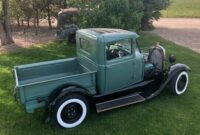New Straight Trucks For Sale: A Comprehensive Guide to Your Next Commercial Vehicle Investment pickup.truckstrend.com
In the bustling world of commerce, logistics, and specialized services, the straight truck stands as an unsung hero. Unlike articulated semi-trucks, a straight truck, often called a box truck, bobtail, or single-unit truck, features a cab and cargo area mounted on a single chassis. This design makes them incredibly versatile, maneuverable, and indispensable for a vast array of businesses, from local delivery services and moving companies to construction crews and specialized equipment transporters.
Investing in a new straight truck is a significant decision that promises numerous advantages over purchasing a used vehicle. It’s an investment in reliability, cutting-edge technology, optimal efficiency, and the precise customization required to meet your business’s unique demands. This comprehensive guide will navigate the intricacies of buying new straight trucks, offering insights, practical advice, and essential considerations to help you make an informed decision.
New Straight Trucks For Sale: A Comprehensive Guide to Your Next Commercial Vehicle Investment
Understanding the "Straight Truck": What Are They?
At its core, a straight truck is a single-unit vehicle where the engine, cab, and cargo body are all integrated onto one continuous frame. This differs from a tractor-trailer setup where a "tractor" pulls a detachable "trailer." The simplicity of their design, coupled with their varied capacities, makes them ideal for tasks that require direct delivery, frequent stops, or operation in urban environments where larger articulated vehicles struggle.
Key Components:
- Chassis: The foundational frame, engine, transmission, axles, and wheels.
- Cab: The driver’s compartment.
- Body: The cargo or specialized equipment area, which is permanently attached to the chassis.

Common Applications:
- Package Delivery: From e-commerce giants to local couriers.
- Moving Services: Residential and commercial relocation.
- Refrigerated Transport: Food and pharmaceutical distribution (reefer trucks).
- Construction: Hauling materials (dump trucks, flatbeds).
- Utility & Service: Carrying tools and equipment (service trucks).
- Liquid & Gas Transport: Fuel delivery (tanker trucks).
- Retail & Wholesale Distribution: Delivering goods to stores or customers.


Why Invest in a New Straight Truck? The Benefits Unpacked
Opting for a new straight truck offers a compelling suite of advantages that can significantly impact your operational efficiency, bottom line, and peace of mind.
- Unparalleled Reliability and Longevity: A new truck comes with zero miles and a full factory warranty, minimizing the risk of unexpected breakdowns and costly repairs in its early life. This translates to more uptime and predictable maintenance schedules, crucial for time-sensitive operations.
- Access to Latest Technology and Efficiency: New models are equipped with the most recent advancements in engine technology, leading to superior fuel efficiency, reduced emissions, and enhanced performance. They also feature advanced driver-assistance systems (ADAS) like collision mitigation, lane departure warnings, and adaptive cruise control, significantly improving safety. Telematics systems offer real-time tracking, diagnostics, and fleet management capabilities.
- Complete Customization to Your Needs: This is perhaps the biggest draw. When buying new, you can specify the exact chassis configuration (engine, transmission, axle ratio), choose the precise body type, and add specialized features (e.g., liftgates, shelving, refrigeration units, power take-offs) tailored to your specific application. This ensures your truck is a perfect fit for your operational requirements from day one.
- Compliance with Regulations: New trucks are built to meet the latest emissions standards (e.g., EPA regulations) and safety requirements, ensuring your fleet remains compliant and avoids potential fines or operational restrictions.
- Stronger Resale Value: A well-maintained new truck generally retains a higher percentage of its value over time compared to a used one, offering a better return on investment should you decide to upgrade in the future.
- Financial Advantages: New vehicle purchases can offer significant tax benefits, such as Section 179 deductions, allowing businesses to deduct the full purchase price of qualifying equipment in the year it’s put into service. Manufacturers and dealers also often provide attractive financing options, incentives, and extended warranty programs.
Key Considerations When Buying a New Straight Truck
Navigating the options for new straight trucks requires careful consideration of several factors to ensure you select the vehicle that best serves your business.
1. Application and Body Type
Your primary use case will dictate the type of body needed.
- Dry Van/Box Truck: Enclosed, weather-proof cargo area for general freight.
- Reefer Truck: Insulated box with a refrigeration unit for temperature-sensitive goods.
- Flatbed Truck: Open platform for oversized or irregularly shaped cargo, often with stake pockets for removable sides.
- Dump Truck: Open-box bed with hydraulic lift for hauling loose materials like sand, gravel, or dirt.
- Curtain Side Truck: Combines benefits of a flatbed (side loading) with a dry van (weather protection).
- Stake Body Truck: Flatbed with removable stakes/panels, offering versatility.
- Service/Utility Truck: Equipped with compartments, cranes, or specialized tools for field service.
- Tanker Truck: For transporting liquids or gases.
2. Chassis and Powertrain
The chassis determines the truck’s capacity and performance.
- Gross Vehicle Weight Rating (GVWR): The maximum operating weight of the truck as a whole, including the vehicle, fuel, driver, passengers, and cargo. This is crucial for legal compliance and operational safety.
- Light-Duty (Class 3-5): GVWR 10,001-19,500 lbs (e.g., Ford F-350/F-550 chassis cabs with box bodies).
- Medium-Duty (Class 6-7): GVWR 19,501-33,000 lbs (e.g., Hino, Isuzu, Freightliner M2, Kenworth K270/K370).
- Heavy-Duty (Class 8): GVWR 33,001 lbs and above (e.g., some vocational Peterbilt, Kenworth, Volvo, Freightliner models configured as straight trucks).
- Engine: Consider horsepower (HP) and torque for the loads you’ll carry and the terrain you’ll encounter. Diesel engines are common for heavy-duty applications due to their torque and fuel efficiency, but gasoline and even electric options are emerging for lighter duties.
- Transmission: Automatic transmissions are increasingly popular for ease of driving and fuel efficiency, especially in urban stop-and-go conditions. Manual transmissions offer more control for certain applications.
- Axle Configuration: Common are 4×2 (single rear axle) for lighter loads and 6×2 or 6×4 (tandem rear axles) for heavier capacities and better traction.
3. Features and Technology
Beyond the basics, consider features that enhance safety, efficiency, and driver comfort.
- Safety Systems: ADAS, blind-spot monitoring, rearview cameras, stability control.
- Telematics: GPS tracking, fleet management software, fuel monitoring, engine diagnostics.
- Driver Comfort: Ergonomic seating, air conditioning, infotainment systems, ample storage.
- Specialized Equipment: Liftgates (tuck-away, rail, or conventional), ramps, E-track systems, power inverters, PTOs.
4. Budget and Financing
Beyond the sticker price, consider the total cost of ownership (TCO).
- Purchase Price: Varies widely based on GVWR class, manufacturer, body type, and added features.
- Financing: Explore loan options, leasing, and manufacturer financing programs. A good credit score and a solid business plan are key.
- Operating Costs: Fuel, maintenance, insurance, tires, driver wages. New trucks generally have lower maintenance costs initially.
- Depreciation: Understand how the value of the truck will decline over time.
5. Dealer Support and Service
A strong relationship with a reputable dealer is invaluable.
- Parts Availability: Ensure easy access to OEM parts for timely repairs.
- Service Network: Look for dealers with extensive service networks, especially if you operate across a wide geographical area.
- Maintenance Plans: Inquire about preventative maintenance packages and extended warranty options.
The Buying Process: A Step-by-Step Guide
- Assess Your Needs: Define your cargo type, typical load weight, routes, daily mileage, and any specialized operational requirements.
- Research Manufacturers & Models: Explore reputable brands like Freightliner, International, Kenworth, Peterbilt, Hino, Isuzu, Ford, and GM. Compare their offerings based on your needs.
- Configure Your Truck: Work with a dealer or body builder to customize the chassis and body. Don’t hesitate to ask questions about every component.
- Obtain Quotes & Compare: Get detailed quotes from multiple dealers, ensuring all specifications and features are clearly listed.
- Explore Financing Options: Consult with your bank, credit union, and the dealer’s finance department. Understand interest rates, loan terms, and down payment requirements.
- Test Drive (If Applicable): While a custom-built truck might not be available for a test drive, driving a similar chassis or model can give you a feel for its performance and handling.
- Finalize Purchase & Delivery: Review all paperwork meticulously, understand warranty terms, and arrange for delivery or pickup.
Challenges and Solutions in Acquiring New Straight Trucks
- High Initial Cost:
- Solution: Leverage favorable financing, explore leasing options to conserve capital, and take advantage of tax deductions like Section 179.
- Long Lead Times:
- Solution: Plan well in advance. Order your truck with ample lead time. Some dealers may have pre-built common configurations in stock, or you might find a recently cancelled order.
- Specialized Needs:
- Solution: Work closely with experienced dealers and dedicated body builders who understand your industry and can ensure the truck is precisely configured for your unique operations.
- Evolving Technology & Regulations:
- Solution: Partner with a dealer who stays current on industry trends and regulations. Invest in telematics and driver training to maximize efficiency and compliance.
Practical Advice and Actionable Insights
- Total Cost of Ownership (TCO) Over Sticker Price: Don’t let the initial price overshadow long-term costs. A slightly more expensive truck with better fuel efficiency, lower maintenance, and higher resale value can save you more in the long run.
- Future-Proof Your Investment: Consider emerging technologies like electric or alternative fuel options if your routes and infrastructure support them, as regulations and fuel costs continue to evolve.
- Negotiate Beyond Price: Discuss service agreements, extended warranties, driver training, and parts discounts as part of your negotiation.
- Leverage Manufacturer Incentives: Keep an eye out for seasonal promotions, fleet discounts, or special financing rates offered by manufacturers.
- Get Multiple Quotes: Competition among dealers can work in your favor. Don’t settle for the first offer.
Estimated Price Table for New Straight Trucks
Please note that prices for new straight trucks are highly variable and depend on numerous factors including manufacturer, specific chassis configuration, engine choice, body type, added features, and current market conditions. The ranges provided below are general estimates for new vehicles and can fluctuate significantly.
| Truck Type / GVWR Class | Common Body Type Examples | Estimated Price Range (New, USD) | Key Features / Notes |
|---|---|---|---|
| Light-Duty (Class 3-5) | Box Truck (12-16 ft) | $60,000 – $120,000 | Often based on commercial cutaway chassis (e.g., Ford Transit, Chevy Express, Isuzu N-Series). Ideal for local deliveries, last-mile logistics, appliance delivery. Good maneuverability in urban areas. |
| Light-Duty (Class 3-5) | Service/Utility Truck | $70,000 – $150,000+ | Customizable utility body with compartments, often with cranes or specialized equipment. For plumbers, electricians, contractors, telecom. |
| Medium-Duty (Class 6-7) | Box Truck (18-26 ft) | $80,000 – $160,000 | Popular for moving companies, general freight, and larger local distribution. Can include liftgates, air ride suspension. (e.g., Hino, Isuzu F-Series, Freightliner M2). |
| Medium-Duty (Class 6-7) | Reefer Truck (18-26 ft) | $120,000 – $250,000+ | Insulated box with refrigeration unit. Essential for food service, pharmaceuticals, floral delivery. Higher cost due to refrigeration unit and insulation. |
| Medium-Duty (Class 6-7) | Flatbed Truck | $80,000 – $150,000 | For hauling construction materials, machinery, large equipment. Can be fitted with stake sides. |
| Medium-Duty (Class 6-7) | Dump Truck | $100,000 – $200,000+ | Vocational chassis with hydraulic dump body. Used in construction, landscaping, demolition. |
| Heavy-Duty (Class 8) | Vocational Dump Truck | $150,000 – $300,000+ | Robust chassis for heavy-duty construction, aggregate hauling. Often multi-axle configurations (e.g., Peterbilt, Kenworth, Western Star). |
| Heavy-Duty (Class 8) | Tanker Truck | $180,000 – $400,000+ | Specialized for liquid or gas transport (fuel, water, chemicals). Highly regulated and complex configurations. |
Disclaimer: These are estimated price ranges for new straight trucks. Actual prices can vary significantly based on brand, engine type, transmission, specific body manufacturer, added features (e.g., liftgates, special refrigeration units, PTOs), current market demand, regional differences, and any applicable taxes, fees, or incentives.
Frequently Asked Questions (FAQ) About New Straight Trucks For Sale
Q: What’s the difference between a straight truck and a semi-truck?
A: A straight truck (or box truck) is a single-unit vehicle where the cab and cargo body are permanently attached to one chassis. A semi-truck (or tractor-trailer) consists of two separate units: a tractor (the cab and engine) that pulls a detachable trailer. Straight trucks are generally more maneuverable and ideal for local deliveries, while semi-trucks are designed for long-haul transport of larger freight.
Q: What is GVWR and why is it important?
A: GVWR stands for Gross Vehicle Weight Rating. It’s the maximum operating weight of the truck, including the vehicle itself, fuel, driver, passengers, and all cargo. It’s crucial because it determines the truck’s legal classification (light, medium, heavy-duty), impacts licensing requirements, and ensures you don’t overload the truck, which is dangerous and illegal.
Q: Can I customize a new straight truck?
A: Absolutely! One of the biggest advantages of buying new is the ability to customize. You can choose the specific chassis (engine, transmission, wheelbase), select from various body types (dry van, reefer, flatbed, dump, etc.), and add numerous features like liftgates, shelving, refrigeration units, specific lighting, and telematics systems to perfectly match your business needs.
Q: How long does it take to get a new straight truck after ordering?
A: Lead times vary significantly based on the manufacturer, model, desired customization, and current supply chain conditions. It can range from a few weeks for common stock models to several months or even over a year for highly customized or specialized builds. It’s best to discuss lead times with your dealer early in the process.
Q: Are electric straight trucks available?
A: Yes, the market for electric straight trucks is rapidly growing, especially in the light and medium-duty segments. Many manufacturers are introducing electric versions of their popular box trucks and chassis cabs. While they often have a higher upfront cost, they offer lower operating costs (fuel, maintenance) and zero tailpipe emissions, making them an attractive option for businesses focused on sustainability and local routes.
Q: What kind of financing options are there for new straight trucks?
A: Common financing options include traditional bank loans, credit union loans, manufacturer financing programs (often with competitive rates), and leasing. Leasing can be beneficial for businesses that prefer lower monthly payments, want to preserve capital, or frequently upgrade their fleet. Tax deductions like Section 179 can also significantly reduce the net cost of purchase.
Q: Is a new truck always better than a used one?
A: Not always for every business, but for most, a new truck offers significant advantages. New trucks come with full warranties, the latest technology, better fuel efficiency, and lower initial maintenance costs. They also offer the benefit of full customization. Used trucks can be more budget-friendly upfront, but may incur higher maintenance costs, lack modern features, and have an unknown service history. The "better" choice depends on your budget, operational needs, and risk tolerance.
Conclusion
The decision to invest in a new straight truck is a strategic one, offering a powerful combination of reliability, efficiency, and tailored functionality that can propel your business forward. By understanding the various types, meticulously considering your specific operational needs, and navigating the purchasing process with a clear strategy, you can acquire an asset that not only meets your current demands but also provides a robust foundation for future growth. A well-chosen new straight truck isn’t just a vehicle; it’s a mobile powerhouse designed to deliver success, mile after mile.


